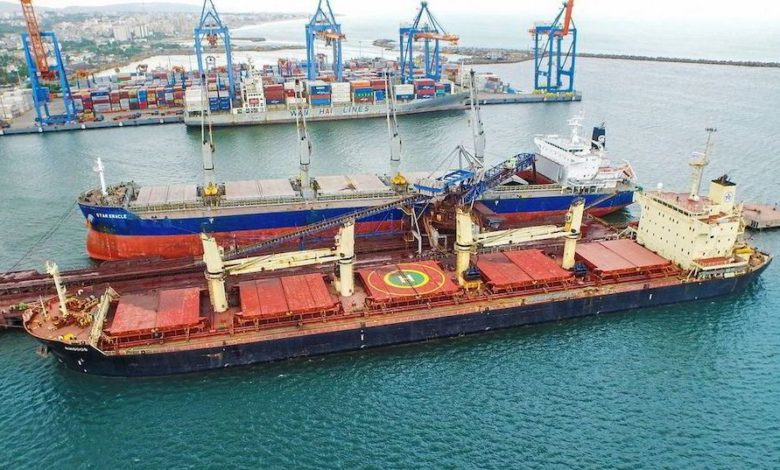Insurer gives warning as desperate shippers seek bulk carriers to move containers

Leading exporters are chartering bulk carriers to move containers, something the UK P&I Club has warned carries a raft of safety issues.
Amid container shipping’s most extraordinary year for rates and available tonnage, desperate shippers have tapped bulk carrier owners to move boxes with rumoured deals done for shipments on a range of sizes from capes down to supramaxes in recent weeks.
British insurer the UK P&I Club has informed clients to be aware of stowage rules if accepting containers onboard bulk carriers.
Moreover, the club has warned that the existing strength calculations for deck and hatch covers on modern bulk carriers usually only allow for so-called green sea loads instead of cargo weight. However, the allowable load density can be increased by reinforcements, subject to approval by the vessel’s class. Similarly, any tank top-loading needs to be specially considered and approved.
On top of that, bulk carrier owners eager to accept some high paying containers, will need to think about updated stability analysis, while with so many fires emanating from containers these days, the insurer has advised owners to buy additional firefighting equipment.
Splash has been in contact with a number of dry bulk shipowners this month who are currently in touch with class, flag and insurers, looking at making their ships capable of moving containers.
The dearth of cellular container tonnage in the charter market has also forced many companies to tap into the multipurpose (MPP) market to cover their needs this year, targeting ships with good speeds and high container intakes, sending MPP rates into record territory.
“Capacity constraints in the competing sectors due to container equipment shortages, port congestion and the release of pent-up demand post the global pandemic, have combined to provide a perfect storm for the multipurpose fleet,” UK consultants Drewry noted in an MPP report published last month.


One level of containers on deck,pay crew cost plus.
If the boxes being moved are empties being repositioned, and/or if the bulkers have box shaped holds, it’s not much of an issue, surely?
If, but as we have seen with Wal-Mart that probably won’t be the case. Holds may be biox shaped but they aren’t box friendly sized. Miller’s are quite right to be concerned as there is a history of problems with boxes on bulkers. There is also the problem of the adequacy of cargo securing manuals.
What about RoRos? there are some idling and could easily take breakbulk cargos
Circa 1989, I was Superintendent with a major container company in Canada. As one of the regular box boats was in dry-dock, chartering picked up a bulker to fill the gap in the schedule. Westbound in the North Atlantic, it encountered severe weather. A twist-lock failed, then another failed, and with no cell guides to restrain the motion, the entire stow shimmied itself to scrap metal. Which was bad, but several of the containers held phosphorus pentoxide. The clean-up and stevedoring costs were astronomical!
Anyone contemplating the use of a bulker to carry containers should consult both a Naval Architect and a Dangerous Goods expert.